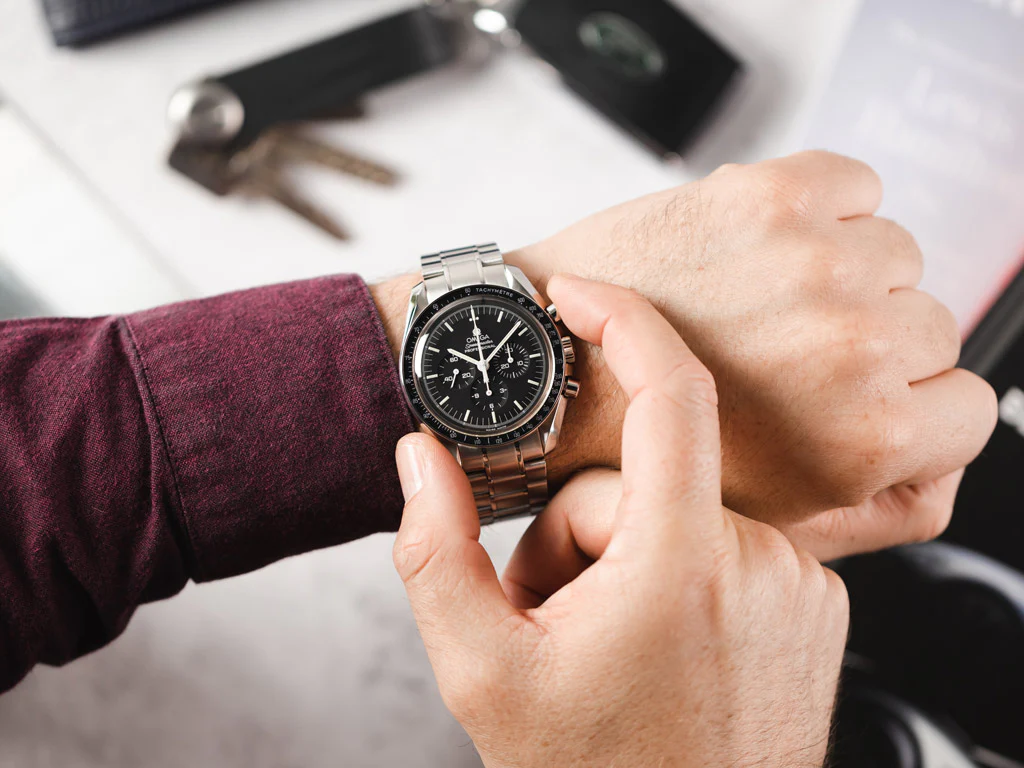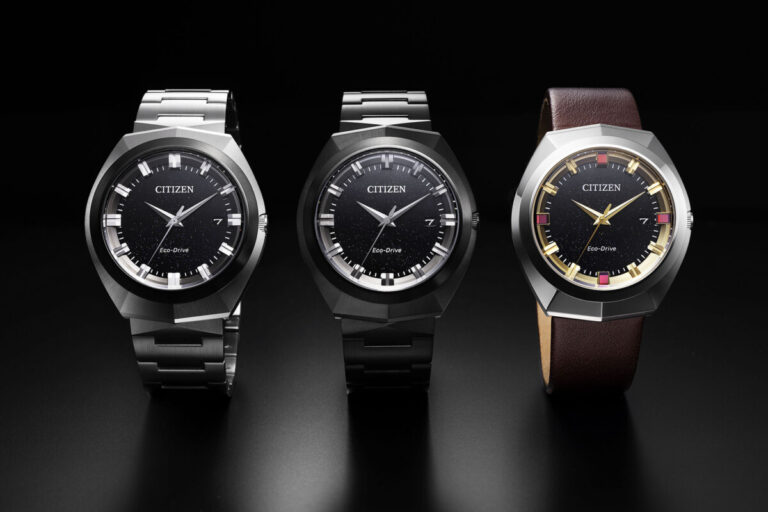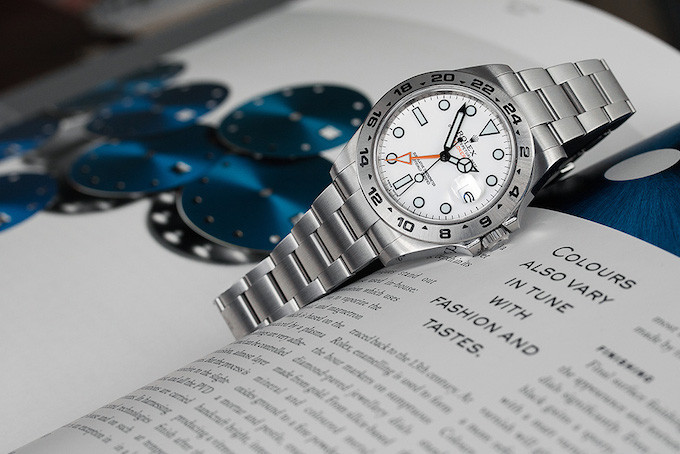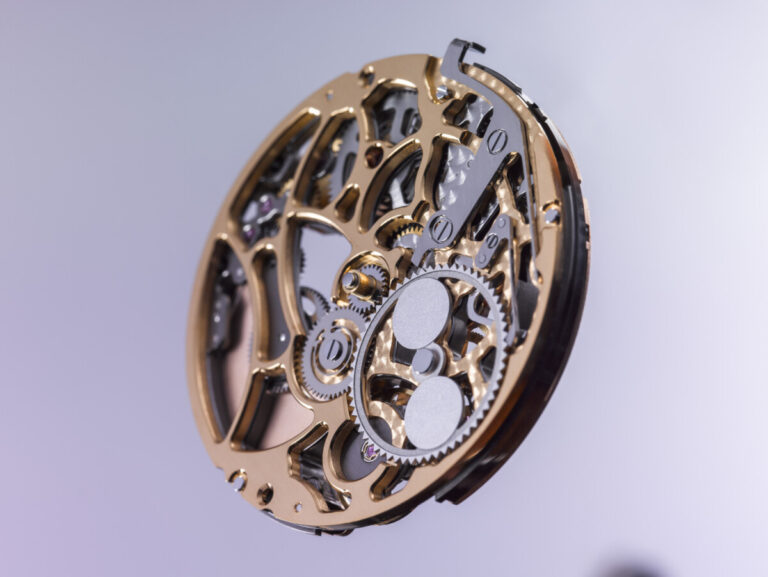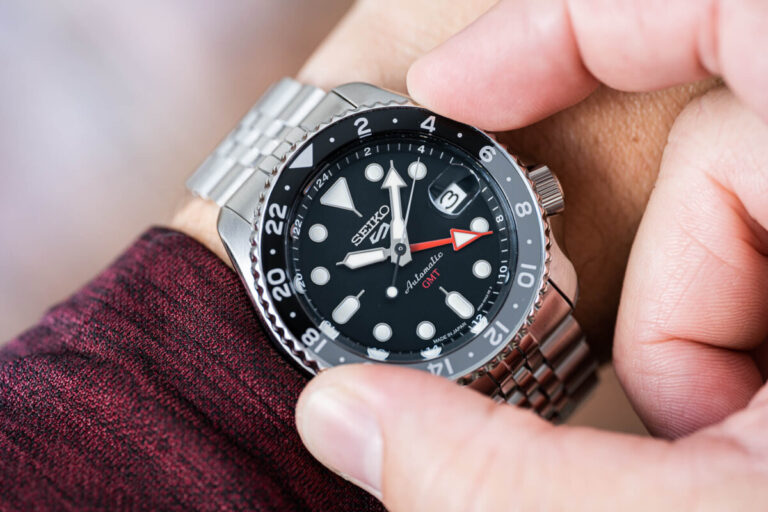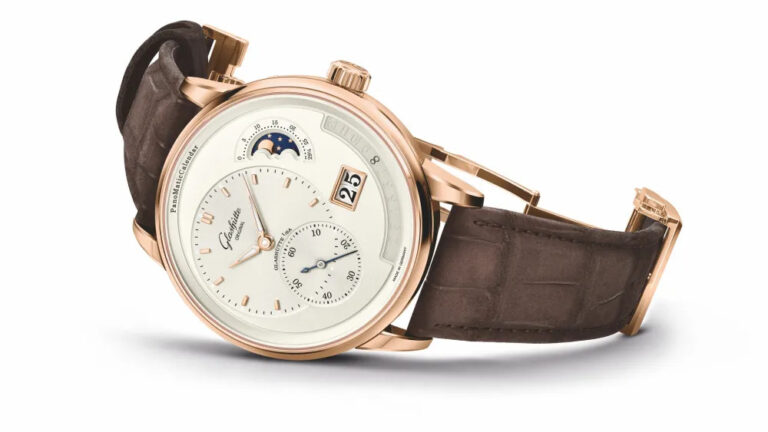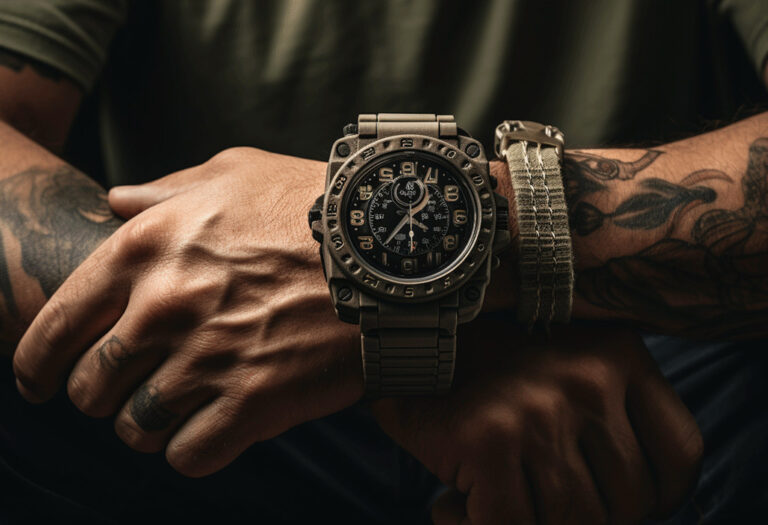If you’re a fan of chronograph watches, you’ve probably noticed the tachymeter scale on the dial or bezel. But what exactly is this auxiliary scale for? In this article, I’ll explain what a tachymeter is, how it’s used in conjunction with the chronograph function, and why it’s such a useful complication to have on your watch.
What Is a Tachymeter?
In simple terms, a tachymeter is a scale that allows you to measure the speed of an object or the distance it has traveled based on the time elapsed. It essentially turns your chronograph watch into a rudimentary calculator for speed and distance.
The tachymeter scale is typically marked with units of speed, most commonly kilometers per hour or miles per hour, up to a maximum value around 400-500 units. It’s designed to work seamlessly with the chronograph’s central seconds hand.
How Does a Tachymeter Work?
The operating principle behind the tachymeter is quite straightforward. You use the chronograph function to time an object traveling over a fixed distance, then read the tachymeter scale to determine its average speed during that interval.
Here are the steps to use the tachymeter on your chronograph watch:
- Start the chronograph when the object (e.g. a car) begins moving by pressing the top pusher.
- Stop the chronograph when the object finishes the measured distance (e.g. 1 mile) by pressing the top pusher again.
- Note the position where the chronograph’s central seconds hand has stopped on the tachymeter scale.
- The value on the tachymeter scale indicates the average speed in km/h or mph over that distance.
- Reset the chronograph using the bottom pusher to time a new run.
Conversely, you can also use the tachymeter scale to measure the distance traveled if you know the object’s fixed speed. Simply time how long it takes to cover the unknown distance, then read off the distance value corresponding to the elapsed time on the tachymeter.
The Versatility of the Tachymeter
While the tachymeter was originally designed for timing automotive speeds and distances, its usefulness extends far beyond that. This nifty complication can be applied in all sorts of scenarios where measuring speed or distance is required:
- Timing runner/cyclist speeds over a fixed course
- Gauging the rate of flow in industrial processes
- Determining the speed of machinery rotation
- Calculating the pace of anything in motion
The tachymeter lends both precision and convenience to these measurements compared to manually calculating rates or distances. It’s an unsung hero among watch complications that packs practical utility into an elegant design.
Tachymeter Watches – Form Meets Function
Beyond its functionality, the tachymeter scale is also a stylish and distinctive visual element that watch enthusiasts appreciate. Many iconic chronograph models proudly feature the tachymeter as part of their signature look:
Rolex Daytona 116500
The Rolex Daytona is arguably the most famous chronograph watch with a tachymeter bezel scale. This 40mm stainless steel sports watch has a highly legible white dial with black chronograph subdials. Its engraved tachymeter bezel makes it easy to read off speeds while timing events. The Daytona is an excellent investment piece that retains its value well over time.
Tudor Black Bay Chrono
As a more affordable alternative to the Daytona, the Tudor Black Bay Chrono incorporates a tachymeter scale into its wide bezel ring. The ivory dial has a bi-compax chronograph layout with two subdials. At 200m water resistance and fitted with a stainless steel bracelet, it’s a capable sports chronograph with vintage-inspired looks.
Hamilton Intra-Matic Auto Chrono
For fans of retro 1960s chronograph design, the Hamilton Intra-Matic Auto Chrono is a compelling modern reinterpretation. It features a reverse panda dial with blue sunray brushed surface contrasting white subdials. But the highlight is the oversized, chunky tachymeter bezel that gives the watch its unmistakable vintage character and legibility.
These are just a few examples of how watchmakers have integrated the functional tachymeter scale into stylish watch designs that appeal to collectors and enthusiasts alike. The tachymeter adds both technical capability and a sporty, purposeful flair.
Conclusion
While it may seem like an anachronistic complication in our digital age, the tachymeter continues to be a prized feature on many chronograph watches. Far from just an aesthetic design cue, it serves a genuinely useful function – enabling the measurement of speeds and distances with the wrist-mounted timekeeping instrument that is the chronograph.
Whether you’re an automotive enthusiast timing lap times at the track, an athlete monitoring your training pace, or simply appreciate the precision and attention to detail that a tachymeter represents, this ingenious scale is an excellent addition to any chronograph watch.
So the next time your eye is drawn to the distinctive graded markings on the bezel or dial of your favorite chronograph, remember – that’s the tachymeter at work, adding both functionality and flair. It’s a watchmaking complication that has stood the test of time.

